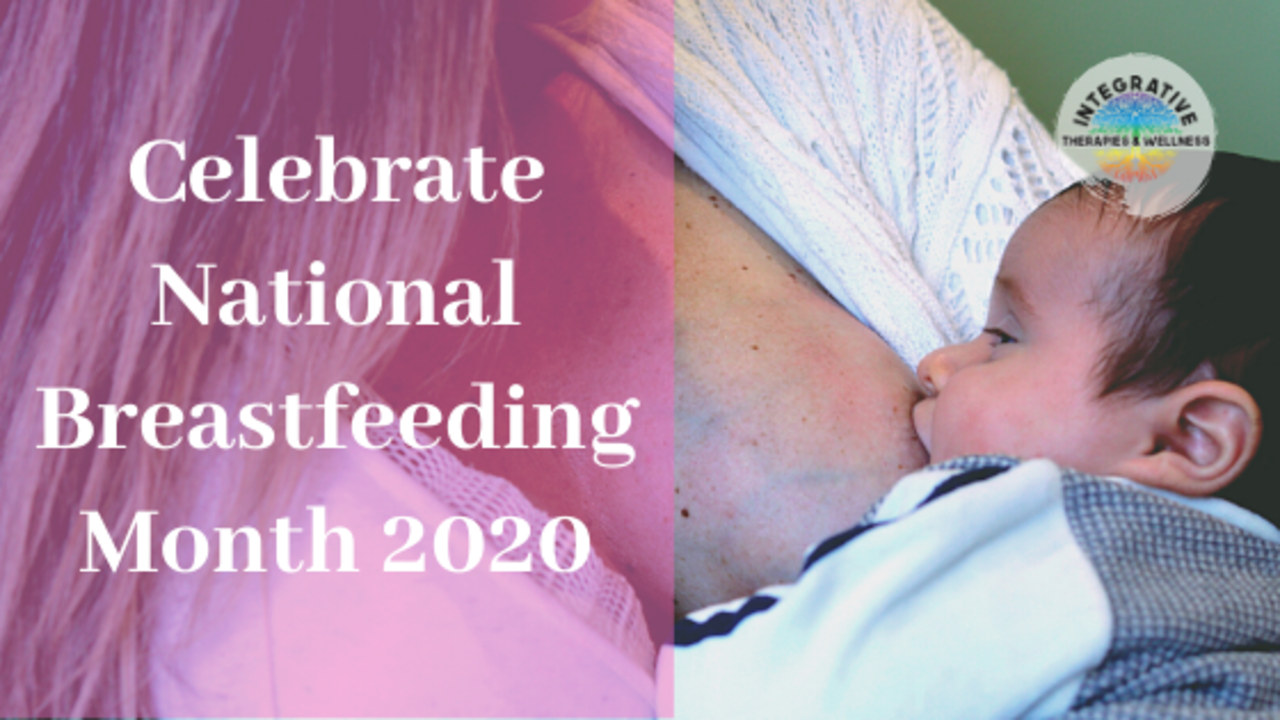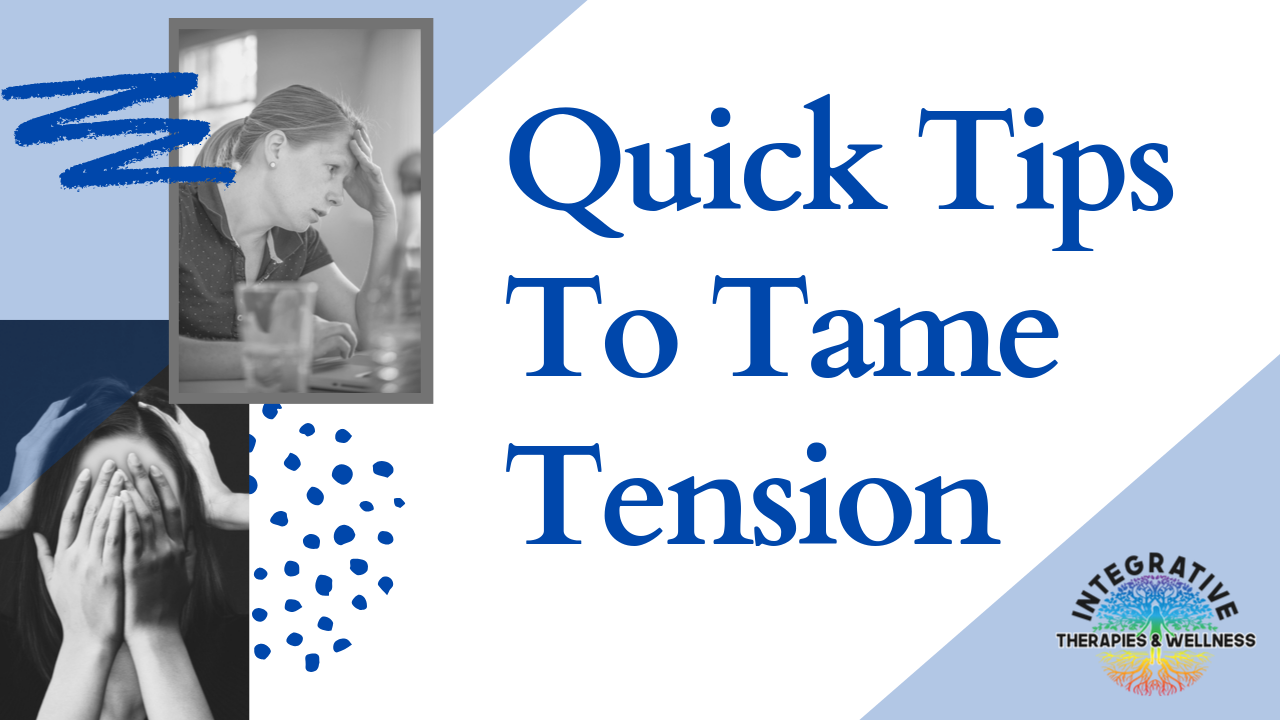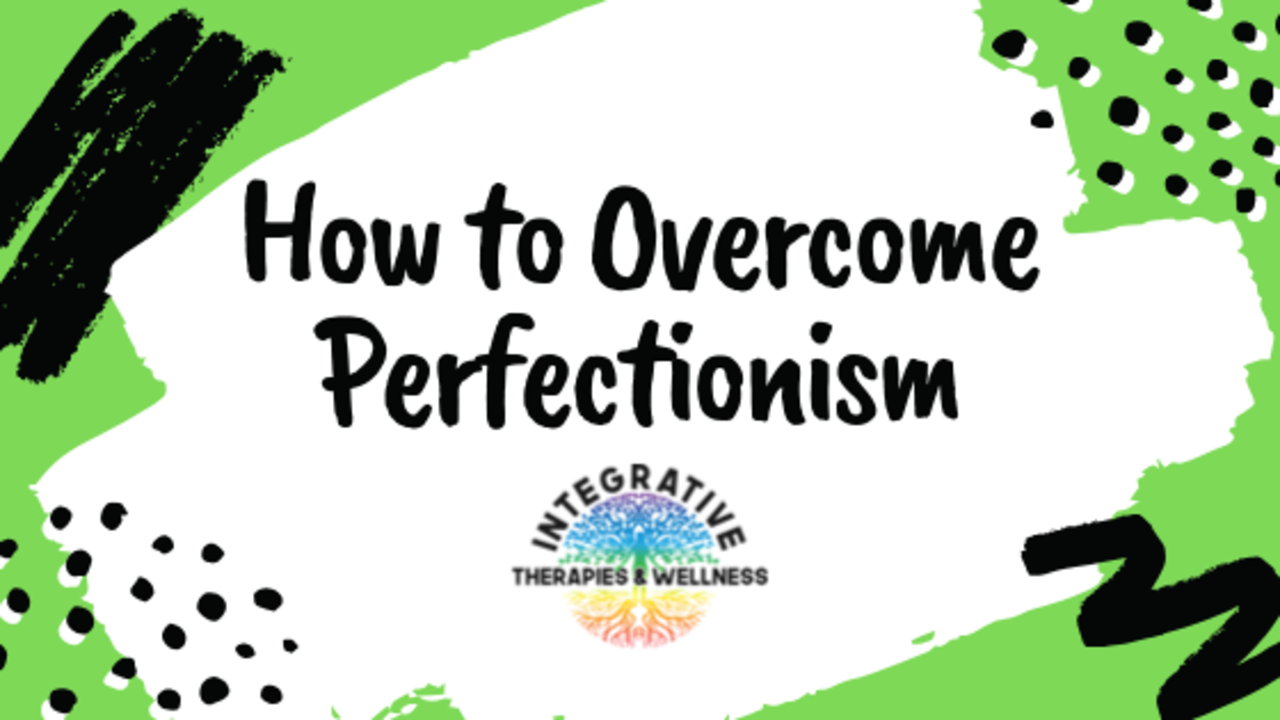Blog
National Breastfeeding Month 2020

Integrative Therapies & Wellness is celebrating National Breastfeeding Month!
Breastfeeding comes with some incredible benefits!
Research shows that breastmilk can provide protection against certain common childhood illnesses, such as ear infections, respiratory infections, and diarrhea. It can also help to reduce the risk of certain allergies and type II diabetes. For mom, breastfeeding triggers the release of oxytocin, which plays a role in bonding with your baby, as well as stimulates the uterus to contract following childbirth. Breastfeeding may also reduce the risk of breast cancer as well as ovarian cancer.
protection against certain common childhood illnesses, such as ear infections, respiratory infections, and diarrhea. It can also help to reduce the risk of certain allergies and type II diabetes. For mom, breastfeeding triggers the release of oxytocin, which plays a role in bonding with your baby, as well as stimulates the uterus to contract following childbirth. Breastfeeding may also reduce the risk of breast cancer as well as ovarian cancer.
. . . As well as some challenges.
While the benefits of breastfeeding are numerous, breastfeeding can also come along with some challenges. Pain with latch, clogged ducts, mastitis, and low milk supply are all common but not normal when initiating a breastfeeding relationship. If you plan to breastfeed, it is helpful to have a plan in place if you should need addi...
Re-Balance with Grounding

Life is complex and hectic at times where we can get overwhelmed with excessive “thinking” leaving us “revved up” and lost in our “head space”. This state can leave us disconnected from ourselves and our surroundings. This is usually a sign that our nervous system is disrupted and if not addressed can lead to more complex issues.
Why do I need to practice grounding?
It is estimated that the mind thinks between 60,000 to 80,000 thoughts per day. Excessive thinking, especially negative or fear provoking thoughts, can trigger our sympathetic nervous system eliciting a stress response in our body. This stress response is also known as “fight or flight”, which can leave us in survival mode for an extended period of time.
If this becomes a habitual pattern, it can tax our adrenal glands, secreting too little or too much stress hormone, cortisol. Over time this can cause several stress related illnesses, such as ulcers, high blood pressure, cardiovascular diseases, chronic back an...
Boost Your Immunity

Thoughts of fear and worry elicit emotions, often unexpressed, which in turn creates a physiological response in the body. Research has proven that fear and related emotions can produce a chemical (TGF) that causes the fascia to thicken, increasing inflammation and compromising our immune system. Fascia is the soft tissue that weaves throughout our entire body surrounding and supporting every single cell and structure in your body. The thickening of the fascia becomes solidified, like a “straight jacket” on the body and becomes a source of pain, dysfunction, and limitation, which may cause additional fear, further thickening the fascia, creating more restrictions/contraction in an attempt to protect against the unidentified threat.
Authentic myofascial release stimulates a profound phenomenon. It begins with “pressure electricity”. It is understood that the fascia is a crystalline structure, and when pressure is applied to a crystal, you create electrical flow. After about 5 m...
Functions Of The Pelvic Floor: Part 1

The Body’s Shock Absorber
After the birth of my 3rd child, via c-section, I embarked on an intense fitness endeavor in pursuit to restore my pre-pregnancy body. Within a year I had surpassed my goals but was experiencing back pain. I was in the best shape I had ever been in my life and the lowest weight I had been in years. I golfed with my gal pals Thursday evenings. After golfing on a Thursday, I began experiencing an odd sensation in my right hip. No pain, but a peculiar feeling. The symptoms further progressed the more active I became.
Long story short, I ruptured a disc in my lumbar region and underwent immediate surgery due to loss of function in my right lower extremity. I was terrified! Afraid I’d never return to my former level of activity and potential never get rid of the pain. During this time I was training to become a pelvic floor occupational therapist. I began learning about the importance of the pelvic floor and inner core. Which brought me to the realization that ...
Stress, Breath, and the Psoas

Do you have back or neck pain/tension, SI pain, sciatica, or anxiety? Most people experience stress in some way, shape, or form. Life, in general, can be stressful. Do you have a daily practice focusing on stretching, breath or breathing? If not you’ll want to continue reading!
Our bodies were created with a survival instinct. When we perceive danger with one of our 5 senses our sympathetic nervous system is activated and it responds with a physiological reaction called “fight or flight” (stress response). Our brains initiate an electrochemical response which may include an increased heart rate, constricted muscles, short/rapid breaths, chest tightness, dilated pupils, sweating, trembling, and difficulty focusing.
This comes in handy when we need to run from danger or fight for our life. But we also know that our bodies may respond as if we are in danger when, in reality, we are not. Have you ever woken from a dream in this state? Dreams are proof that mere thoughts can create t...
3 Ways To Practice Gratitude

Gratitude takes root in our heart and our senses.
Practicing gratitude can keep our hearts open to the tenderness in our daily experiences. Choose to focus your time and attention on what you appreciate. Appreciation softens us and soothes our minds by connecting us with the ordinary things that we may otherwise take for granted.
Whether it’s choosing to write a few sentences in a journal, or simply taking a moment to silently acknowledge all that you have, giving thanks can transform your life. Research shows that gratitude is one of the keys to happiness, well-being and life satisfaction. Read on for 3 ways to practice gratitude.
1. Say “thank you”.
Say “thank you” and mean it. Saying thank you can be a gift, and one that feels good, too. Offering appreciation to one another is powerful. Be grateful for the kind words people say about you and believe them.
The next time you receive a compliment, say “thank you” and own it. It will transform how you feel about yoursel...
Quick Tips To Tame Tension

Have you been feeling a little tense lately?
Here are some quick tips to tame your tension. Try them out and let me know which one helps you best.
Practice slow-paced breathing.
- Consciously changing the way you breathe appears to send a signal to the brain to adjust the parasympathetic branch of the nervous system, which can slow heart rate and digestion and promote feelings of calm.
Watch your favorite comedy or sitcom.
- Enjoying a good laugh activates and relieves your stress response, and it can increase and then decrease your heart rate and blood pressure. Resulting in a good, relaxed feeling.
Adopt an uplifting mantra and repeat it when you're happy.
- That will train your mind to associate the phrase with being content. Then, when you're on edge, chant your mantra and you'll immediately feel more at ease.
Spending even a few minutes in meditation can restore your calm and inner peace.
- Anyone can practice meditation anywhere. It's simple and inexpensive, and it ...
10 Tips For A Healthy "Pair"

Let’s focus on prevention and awareness to support our “girls”!
Breast cancer is one of the most common kinds of cancer in women. The good news is that most women can survive breast cancer if it’s found and treated early.
#1 Exercise!
Studies consistently show that increased physical activity is linked to lowering breast cancer risk. It’s thought that physical activity regulates hormones including estrogen and insulin, which can fuel breast cancer growth. Fat cells produce estrogen, and high levels of estrogen have been linked to certain cancers. Working out can shrink the size of fat cells, so your body pumps out less estrogen. Regular exercise also helps women stay at a healthy weight, which also helps regulate hormones and helps keep the immune system healthier. Even older women need to be concerned about estrogen, because of it being produced by fat cells post-menopause.
There is no magic number of hours a woman should exercise to prevent or lower the risk of breast cancer. H...
An Occupational Therapist’s Journey Into Pelvic Health

The Story
How To Overcome Perfectionism




